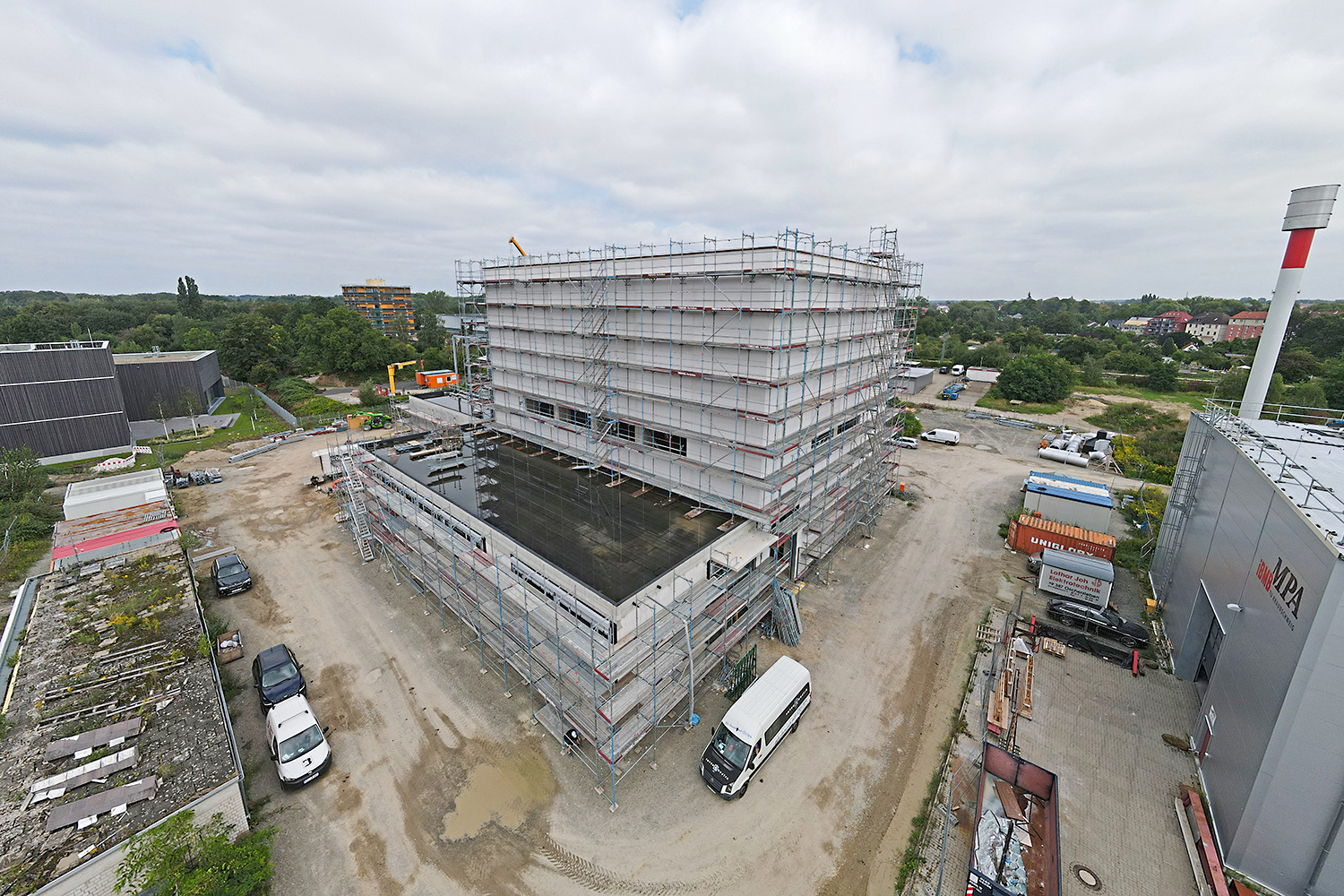For a fire-safe city of the future Professor Jochen Zehfuß on the new Center for Fire Research
New digital construction methods, more wooden buildings, increased use of renewable raw materials, innovative energy storage in buildings: With all these changes in construction, fire safety must of course also be ensured. Scientists at the new Center for Fire Research (ZeBra) at Technische Universität Braunschweig are conducting research into this. We talked to Professor Jochen Zehfuß, Head of the Division of Fire Safety at the Institute for Building Materials, Concrete Construction and Fire Safety (iBMB), about the special research opportunities offered by ZeBra.

Professor Jochen Zehfuß, head of the Division of Fire Safety at the Institute for Building Materials, Concrete Construction and Fire Safety (iBMB). Photo credit: Kristina Rottig/TU Braunschweig
Professor Zehfuß, the new Center for Fire Research – the ZeBra – will conduct research into the fire behavior of innovative construction methods and products. Can you describe why the ZeBra is so unique?
Braunschweig is already a “mecca” of fire protection: We have a large number of fire furnaces for investigating the fire resistance behavior of building components – more than any other fire testing facility in Central Europe. In our previous work, however, the focus was mostly on the behavior of building components in the event of a fire, rather than on the fire process as such.
In the course of climate change, the sustainability discussion, the energy turnaround, but also digitalization, our society is facing a major transformation that also and especially affects the construction industry. The construction industry is responsible for a large share of CO2 emissions. That is why construction methods using renewable raw materials are now increasingly being developed. Added to this is the digital production of building components, with which they are created in a more material-saving and thus resource-efficient way. But how do these new components and products behave in fire? Are our existing test methods still applicable at all? We will be investigating these research questions at ZeBra.

The experimental hall of the Center for Fire Research has an area of 24 x 30 meters and a room height of 22 meters. It will house several large-scale devices. Photo credit: iBMB/TU Braunschweig
What special research opportunities does the new research center offer?
In the ZeBra, we will have two large calorimeters. How can they be imagined? Basically, the calorimeters consist of large hoods with an area of twelve by twelve meters, through which the fire gases are collected and extracted at up to 70 cubic meters per second. Through measuring sections in the exhaust gas flow, we can analyze the gases released and draw conclusions about the heat release rate via the oxygen reduction.
In the free calorimeter, we can examine any fire load – for example, different configurations of storage racks, but also cars and even buses. The second calorimeter is coupled with a four-story fire house. Here, scientists can investigate façade designs and vertical fire spread over several stories for different building types. New extinguishing systems or firefighting strategies of fire departments can also be tested on a real scale.
In addition, we have other calorimeters in smaller scales to investigate battery fires and to obtain data for fire simulation models (e.g. ignition temperatures). This is because an important part of the research center, in addition to experimental research, is fire modeling – with the goal of developing efficient and accurate computational models. That’s where experimental and theoretical research go hand in hand.
How often will you conduct experiments at ZeBra?
We will conduct the spectacular large-scale experiments less often. After all, these are also associated with immense costs. The ZeBra’s research system should enable us to use small-scale tests or models to describe fire behavior more and more accurately, thus creating an important building block for a safe city of the future.
However, there will be no substitute for large-scale tests to verify the models. We expect to conduct about five large-scale tests per year. The smaller-scale tests will be carried out much more frequently; on average, we have calculated 20 to 30 tests per year. If everything goes according to plan in the construction phase, we will be able to carry out the first trial in just one year!
